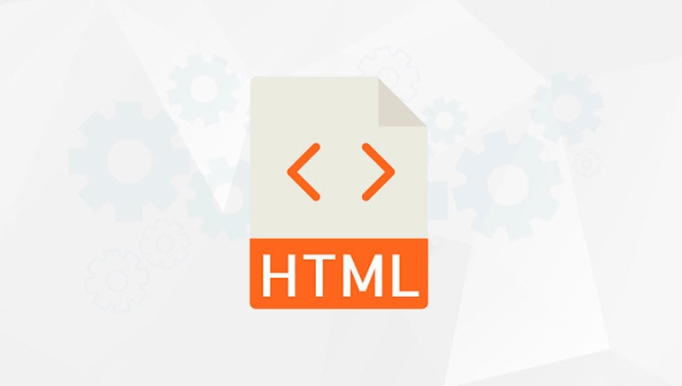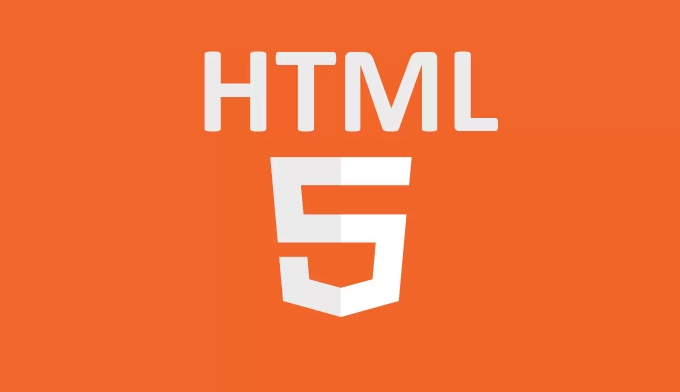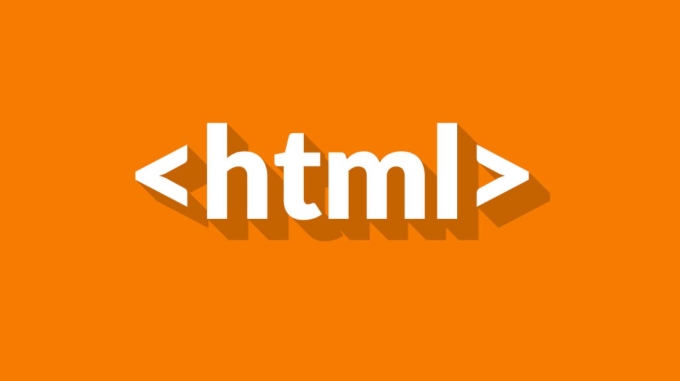To use SVG in HTML and give full play to its advantages, you need to pay attention to the following points: 1. The embedding method is divided into inline and external reference. Inline is suitable for interactive scenes, and external reference is suitable for static graphics; 2. SVG is often used for icons, data visualization and animation, with lossless scaling and programmability; 3. In terms of optimization, metadata needs to be removed, complexity is controlled, and appropriate size is set; 4. SVG can control styles through CSS, but pay attention to the differences in the use of attributes such as fill and stroke. Mastering these core content can more efficiently apply SVG on web pages.

SVG (Scalable Vector Graphics) is becoming more common in web development, especially in scenarios where high-quality graphics and responsive design are required. It is different from traditional image formats such as PNG or JPG. It is based on XML and can be scaled losslessly, suitable for various screen sizes. If you want to use SVG in HTML and use its advantages, you must know the following.

How to embed SVG in HTML
SVG can be written directly in HTML files or referenced as an external file. The two methods have their own advantages and disadvantages, depending on the usage scenario.
- Inline SVG : Write SVG code directly in HTML, so that you can use CSS and JavaScript to control the style and behavior of the graphics. For example, you can add a :hover effect to the path of an SVG, or bind a click event.
- External reference : Introduce SVG files through
<img src="/static/imghw/default1.png" data-src="https://img.php.cn/upload/article/000/000/000/175294961641047.jpeg" class="lazy" alt="Scalable Vector Graphics (SVG) in HTML" >tags, CSS background images, or<object></object>tags. This method is simpler, but interactivity is limited.
It is recommended to use inline SVG in scenes where interaction or animation is required, such as icons, charts, buttons, etc.

Common uses and benefits of SVG
SVG is very flexible in web pages, and common uses include:
- Icons : Icons are one of the most common uses for SVG, especially in responsive designs where the icon zoom is not distorted.
- Data visualization : Visualization libraries such as D3.js use SVG extensively to draw charts.
- Animation effect : Through CSS or JavaScript, SVG path animation, color gradient and other effects can be realized.
The main advantages of SVG are lossless scaling and programmability . Unlike bitmaps, zooming in will not blur; and you can control every graphic element with code.

Some optimization details that are easy to ignore
Although SVG looks simple, if you don't pay attention to optimization, it may also affect page performance.
- Remove unnecessary metadata : Many SVGs exported from design tools will contain comments, layer information, etc., which are not needed in web pages. It can be compressed using tools such as SVGO .
- Control complexity : Overly complex paths may slow down rendering, especially on mobile. Try to simplify the graphic structure.
- Use the right size : Even if the SVG is a vector graphic, it is not recommended to set a very large
viewBox, which may affect the layout calculation.
In addition, if SVG is used as an icon, it is recommended to unify the icon size and style to avoid visual confusion.
Tips for combining SVG and CSS
SVG elements, like ordinary HTML elements, can be controlled by CSS, which brings great convenience to style design.
For example, you can change the color of an SVG path like this:
svg path {
fill: #f00;
transition: fill 0.3s ease;
}
svg path:hover {
fill: #00f;
} It should be noted that some CSS properties are slightly different in SVG and HTML, such as fill instead of color , stroke controlling stroke, etc. Understanding these differences can avoid the problem that the style does not take effect.
Basically that's it. The use of SVG in HTML is not complicated, but to be really good, you still have to pay attention to structure, performance and interaction details.
The above is the detailed content of Scalable Vector Graphics (SVG) in HTML. For more information, please follow other related articles on the PHP Chinese website!

Hot AI Tools

Undress AI Tool
Undress images for free

Undresser.AI Undress
AI-powered app for creating realistic nude photos

AI Clothes Remover
Online AI tool for removing clothes from photos.

Clothoff.io
AI clothes remover

Video Face Swap
Swap faces in any video effortlessly with our completely free AI face swap tool!

Hot Article

Hot Tools

Notepad++7.3.1
Easy-to-use and free code editor

SublimeText3 Chinese version
Chinese version, very easy to use

Zend Studio 13.0.1
Powerful PHP integrated development environment

Dreamweaver CS6
Visual web development tools

SublimeText3 Mac version
God-level code editing software (SublimeText3)
 Applying Semantic Structure with article, section, and aside in HTML
Jul 05, 2025 am 02:03 AM
Applying Semantic Structure with article, section, and aside in HTML
Jul 05, 2025 am 02:03 AM
The rational use of semantic tags in HTML can improve page structure clarity, accessibility and SEO effects. 1. Used for independent content blocks, such as blog posts or comments, it must be self-contained; 2. Used for classification related content, usually including titles, and is suitable for different modules of the page; 3. Used for auxiliary information related to the main content but not core, such as sidebar recommendations or author profiles. In actual development, labels should be combined and other, avoid excessive nesting, keep the structure simple, and verify the rationality of the structure through developer tools.
 Implementing Clickable Buttons Using the HTML button Element
Jul 07, 2025 am 02:31 AM
Implementing Clickable Buttons Using the HTML button Element
Jul 07, 2025 am 02:31 AM
To use HTML button elements to achieve clickable buttons, you must first master its basic usage and common precautions. 1. Create buttons with tags and define behaviors through type attributes (such as button, submit, reset), which is submitted by default; 2. Add interactive functions through JavaScript, which can be written inline or bind event listeners through ID to improve maintenance; 3. Use CSS to customize styles, including background color, border, rounded corners and hover/active status effects to enhance user experience; 4. Pay attention to common problems: make sure that the disabled attribute is not enabled, JS events are correctly bound, layout occlusion, and use the help of developer tools to troubleshoot exceptions. Master this
 Configuring Document Metadata Within the HTML head Element
Jul 09, 2025 am 02:30 AM
Configuring Document Metadata Within the HTML head Element
Jul 09, 2025 am 02:30 AM
Metadata in HTMLhead is crucial for SEO, social sharing, and browser behavior. 1. Set the page title and description, use and keep it concise and unique; 2. Add OpenGraph and Twitter card information to optimize social sharing effects, pay attention to the image size and use debugging tools to test; 3. Define the character set and viewport settings to ensure multi-language support is adapted to the mobile terminal; 4. Optional tags such as author copyright, robots control and canonical prevent duplicate content should also be configured reasonably.
 Best HTML tutorial for beginners in 2025
Jul 08, 2025 am 12:25 AM
Best HTML tutorial for beginners in 2025
Jul 08, 2025 am 12:25 AM
TolearnHTMLin2025,chooseatutorialthatbalanceshands-onpracticewithmodernstandardsandintegratesCSSandJavaScriptbasics.1.Prioritizehands-onlearningwithstep-by-stepprojectslikebuildingapersonalprofileorbloglayout.2.EnsureitcoversmodernHTMLelementssuchas,
 HTML for email templates tutorial
Jul 10, 2025 pm 02:01 PM
HTML for email templates tutorial
Jul 10, 2025 pm 02:01 PM
How to make HTML mail templates with good compatibility? First, you need to build a structure with tables to avoid using div flex or grid layout; secondly, all styles must be inlined and cannot rely on external CSS; then the picture should be added with alt description and use a public URL, and the buttons should be simulated with a table or td with background color; finally, you must test and adjust the details on multiple clients.
 How to associate captions with images or media using the html figure and figcaption elements?
Jul 07, 2025 am 02:30 AM
How to associate captions with images or media using the html figure and figcaption elements?
Jul 07, 2025 am 02:30 AM
Using HTML sums allows for intuitive and semantic clarity to add caption text to images or media. 1. Used to wrap independent media content, such as pictures, videos or code blocks; 2. It is placed as its explanatory text, and can be located above or below the media; 3. They not only improve the clarity of the page structure, but also enhance accessibility and SEO effect; 4. When using it, you should pay attention to avoid abuse, and apply to content that needs to be emphasized and accompanied by description, rather than ordinary decorative pictures; 5. The alt attribute that cannot be ignored, which is different from figcaption; 6. The figcaption is flexible and can be placed at the top or bottom of the figure as needed. Using these two tags correctly helps to build semantic and easy to understand web content.
 What are the most commonly used global attributes in html?
Jul 10, 2025 am 10:58 AM
What are the most commonly used global attributes in html?
Jul 10, 2025 am 10:58 AM
class, id, style, data-, and title are the most commonly used global attributes in HTML. class is used to specify one or more class names to facilitate style setting and JavaScript operations; id provides unique identifiers for elements, suitable for anchor jumps and JavaScript control; style allows for inline styles to be added, suitable for temporary debugging but not recommended for large-scale use; data-properties are used to store custom data, which is convenient for front-end and back-end interaction; title is used to add mouseover prompts, but its style and behavior are limited by the browser. Reasonable selection of these attributes can improve development efficiency and user experience.
 How to handle forms submission in HTML without a server?
Jul 09, 2025 am 01:14 AM
How to handle forms submission in HTML without a server?
Jul 09, 2025 am 01:14 AM
When there is no backend server, HTML form submission can still be processed through front-end technology or third-party services. Specific methods include: 1. Use JavaScript to intercept form submissions to achieve input verification and user feedback, but the data will not be persisted; 2. Use third-party serverless form services such as Formspree to collect data and provide email notification and redirection functions; 3. Use localStorage to store temporary client data, which is suitable for saving user preferences or managing single-page application status, but is not suitable for long-term storage of sensitive information.






